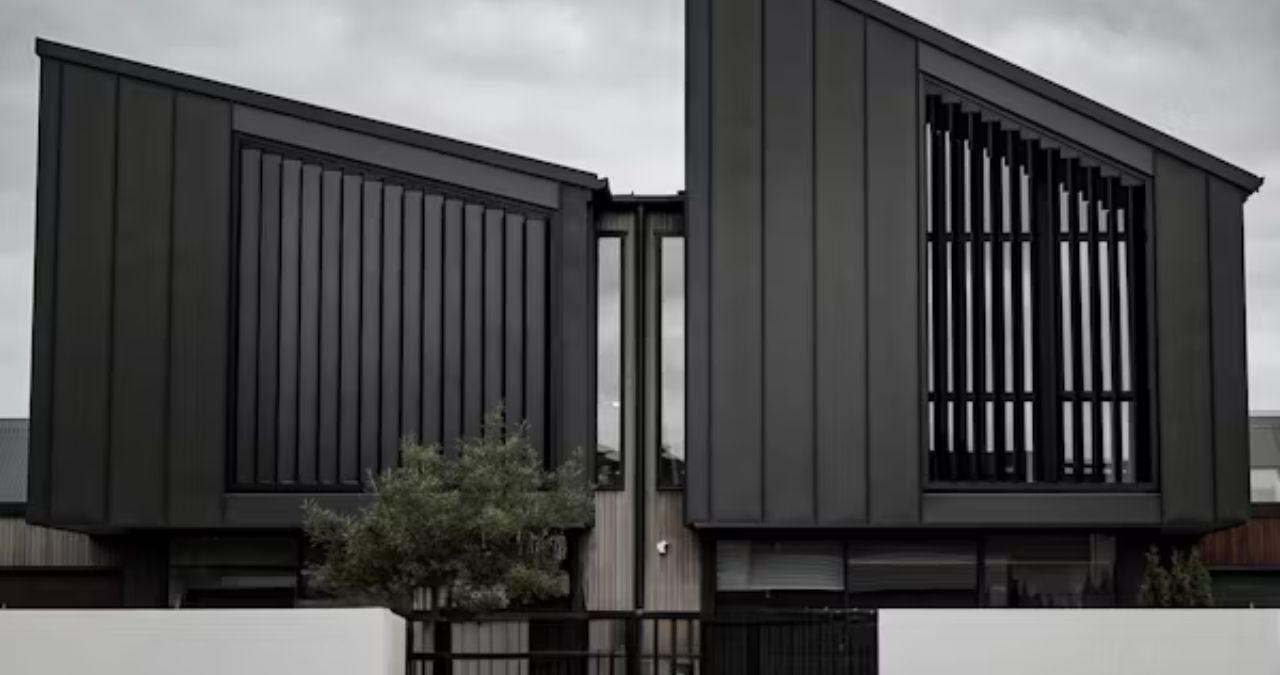REAL ESTATE
How to Make a Rental Home Feel Like Your Own

Renting a home comes with its own set of challenges, one of which is creating a space that truly feels like your own. While you might not be able to make permanent changes, there are many ways to personalize your rental home to make it comfortable, stylish, and uniquely yours. Here are some tips to help you transform your rental into a home you love.
Add Personal Touches with Decor
- Wall Art and Photos: Personalizing your walls is a great way to make your space feel more like home. Use removable adhesive hooks or strips to hang framed photos, artwork, and decorative pieces without damaging the walls. Create a gallery wall of your favorite memories or invest in statement pieces that reflect your personality.
- Rugs and Textiles: Rugs are an excellent way to add color, texture, and warmth to a room. They can also define different areas in an open-concept space. Additionally, throwing blankets and cushions can instantly make a room feel cozier and more inviting.
- Plants: Bringing nature indoors with plants can improve air quality and add life to your home. Choose low-maintenance plants if you’re new to gardening or have a busy schedule. Beautiful pots and planters can also serve as decorative elements.
Lighting Matters
- Lamps and Fixtures: Swap out standard light fixtures for something more stylish, or add floor and table lamps to create a warm, inviting ambiance. Make sure any changes are temporary and reversible, especially if you need to replace the fixtures when you move out.
- String Lights and Candles: String lights can add a whimsical touch to any room, perfect for creating a cozy atmosphere. Candles, both scented and unscented, can also enhance the ambiance and make your home feel more relaxing.
Furniture and Layout
- Invest in Versatile Furniture: Choose pieces that can serve multiple purposes and can be easily moved to future homes. Modular furniture, like sectional sofas or shelving units, can be customized to fit different spaces.
- Rearrange for Functionality: Don’t be afraid to rearrange the layout of your furniture to better suit your needs and lifestyle. Sometimes, a simple shift can make a big difference in how a room feels and functions.
Make the Most of Your Outdoor Space
- Balcony or Patio Decor: If you have a balcony or patio, make it an extension of your living space. Add outdoor furniture, plants, and lighting to create a cozy retreat where you can relax and entertain.
- Garden Projects: If your rental home includes a garden, consider starting a small garden project. Even a few potted plants or a herb garden can make a significant difference in how you feel about your outdoor space.
Organizational Solutions
- Storage Solutions: Invest in stylish storage solutions to keep your home organized and clutter-free. Baskets, bins, and shelving units can help you maximize space and keep everything in its place.
- Custom Closet Systems: If your rental home lacks adequate closet space, consider temporary closet systems that can be easily installed and removed. These systems can help you stay organized and make the most of your storage areas.
Protect Your Home
While making your rental home feel like your own, it’s crucial to ensure it’s protected, so make sure you have a renters insurance policy. Renters insurance covers your personal belongings in case of theft, fire, or other disasters. It also provides liability coverage if someone is injured in your home. This small investment can give you peace of mind and protect you from unexpected expenses.
Conclusion
Making a rental home feel like your own is all about personal touches and creative solutions. By incorporating your style and preferences into the decor, furniture, and layout, you can transform any rental space into a place that feels like home. Remember, it’s the little details that make the biggest difference, so take the time to add those special touches that reflect who you are. With these tips, you can create a comfortable and inviting space that you’ll love to call home.
REAL ESTATE
Modern Fence Design Ideas For Residential Properties

How Fencing Can Transform The Look Of A Home
A thoughtfully chosen and skillfully installed fence can completely redefine a property’s appearance and atmosphere. While fences traditionally provided essential privacy and security, today’s residential designs transform these boundaries into intentional style statements. A well-integrated fence complements the home’s architecture, not only enhancing the landscaping but also serving as a framework that enhances the overall visual impact of the yard and entryway. Properties with attractive, well-kept fencing are known to enjoy increased curb appeal, and real estate industry data highlights how these visual elements can add as much as 5% to a home’s value. Seeking advice from an experienced fence company Houston, TX, can help identify a balance between style and function, ensuring the finished product not only looks appealing but also meets specific privacy and security requirements.
The look of a fence—whether it’s a modern horizontal design or a classic picket—frames how guests and potential buyers perceive your property. Front yard fences can signal hospitality and order, while stylish backyard enclosures can create private, cozy retreats for family gatherings and relaxation. Well-planned fences also highlight elegant plantings or distinctive architecture, pulling the entire outdoor space together. Investing in a distinctive fence design is not just about visual impact; it’s about elevating the everyday living experience and making a lasting impression.
Popular Materials And Their Pros & Cons
The choice of fencing materials is a crucial factor that affects both appearance and longevity, as well as long-term maintenance. Each material offers unique benefits and challenges, and understanding these can help homeowners make informed decisions. Wood remains a top choice due to its natural warmth and flexibility—it’s easy to install, can be painted or stained in an endless array of shades, and adds undeniable charm to both modern and traditional spaces. Cedar and redwood, in particular, are favored for their durability and resistance to rot; however, even the toughest woods will eventually require treatments to protect them from weather and pests.
- Wood: Ideal for a custom look but requires staining or sealing every few years. It can be prone to warping in humid climates.
- Vinyl: Gaining popularity among busy homeowners, vinyl fencing boasts impressive durability and requires virtually no maintenance. Unlike wood, it won’t fade, splinter, or require repainting. On the downside, vinyl is less eco-friendly and more susceptible to cracking when exposed to temperature swings.
- Metal (Aluminum, Steel, Wrought Iron): For a sleek, secure look, metals stand out. While aluminum resists rust and is lightweight, steel and wrought iron can last for generations if maintained. These materials excel in custom designs but may need periodic rust prevention treatments.
- Composite: As a blend of recycled wood fibers and plastic, composite fences offer exceptional sustainability. They mimic the look of wood with the added benefit of requiring minimal care, although initial costs are higher, and color options may be more limited.
Ultimately, the decision on material comes down to the intended use of the fence, climate, budget, and the level of care a homeowner is willing to commit to over the years.
Trendy Fence Designs For Today’s Homeowners
Modern fencing is all about blending aesthetics with innovation. Recently, there’s been a surge in popularity for horizontal slats, a style that brings contemporary flair and a sense of spaciousness to modest yards. According to HGTV, these designs are especially appealing because the crisp, linear nature of the slats not only looks modern but also creates a visual sense of width, making small areas feel larger and more open and in neighborhoods where distinction matters, combining wood with elements like steel, masonry, or stone results in eye-catching contrasts that set properties apart.
- Horizontal Slats: Often crafted from wood or metal, they offer a modern, uncluttered look and allow for adjustable privacy, depending on the spacing.
- Mixed Materials: Blending textures and colors, these fences are not just barriers but centerpieces—think gabion walls with wooden inserts or steel posts paired with cedar panels.
- Decorative Screens: Custom laser-cut panels serve as both garden art and a source of privacy, casting intriguing shadows and offering a unique personality.
- Living Fences: By integrating climbing vines, hedges, or trellises, these fences offer green privacy, promote biodiversity, and soften property lines.
The influence of these choices can be seen in fencing adds value to home features as homeowners find creative ways to mix privacy, curb appeal, and artistry in their outdoor spaces.
Smart Fencing And Modern Features
Advances in technology are transforming what a fence can do for a home. Today, the line between aesthetics and security is blurred as smart features become integrated into modern fencing. Motion-activated lighting, surveillance cameras, keyless entry gates, and even weather-resistant speakers are being built directly into boundaries. These upgrades, once exclusive to luxury estates, are increasingly appearing in everyday neighborhoods.
Incorporating these smart home security trends creates a seamless blend of convenience and peace of mind. For example, solar-powered accent lights not only enhance nocturnal curb appeal but also deter unwanted visitors. Automated gates provide remote access control, while monitored camera systems offer real-time alerts right to a homeowner’s smartphone. In a world where safety and flexibility are highly valued, these innovations help ensure the modern fence is more intelligent than ever.
Zoning Laws & Neighbor Relations
Before beginning any fence installation, it’s crucial to become familiar with local codes and neighborhood regulations. City ordinances often regulate fence height, design, setback from property lines, and even the types of materials allowed. Many homeowners’ associations (HOAs) also have stringent standards that may exceed city codes, particularly for front-yard fencing or community-facing boundaries.
Beyond paperwork and regulations, discussing plans with neighbors can prevent misunderstandings and foster goodwill. Some neighbors may have concerns about sightlines, sunlight, or access points, and a simple conversation early on can smooth the process. In some regions, shared property lines may lead to split costs or responsibility for maintenance. Complying with local laws and prioritizing effective communication ensures that no unpleasant surprises arise once construction begins.
Key Tips For Maintaining Modern Fences
Even the most cutting-edge fencing materials require care to maintain their appearance and optimal performance. For wood fences, annual cleaning to remove algae and mildew, along with restaining or sealing every two to three years, helps prevent rot and discoloration. Soft washing with soap and water is usually sufficient for vinyl, but a quick check for cracks after storms is wise.
- Wood: Schedule regular inspections for insect activity, split boards, and loose posts; address repairs quickly to prevent escalation.
- Vinyl: Wash thoroughly at least twice a year to remove grime, and check joints for tightness after wind events.
- Metal: Remove surface rust as soon as it appears with a wire brush, and touch up paint when needed.
- Composite: Requires little more than an occasional rinse—great for those seeking low-maintenance solutions.
Staying attentive to small issues will extend the life and appearance of your fence, making your investment go further.
Budgeting: What To Expect For Your Project
Costs for fencing projects can vary substantially, depending on the materials chosen, overall perimeter, terrain, labor costs, and special design elements. On average, homeowners typically spend between $1,500 and $4,500 for a standard installation; however, luxury materials or intricate designs can significantly increase costs. For example, wrought iron and custom composites tend to cost more up front but may save money over time due to their durability and low maintenance needs.
Labor can be a significant part of the equation, as more complicated sites and specialized features add time and expertise to the process. When evaluating bids, be sure to ask about warranties, included maintenance, and the potential for future repairs. Factoring in not just immediate expenses but also long-term value and required upkeep helps ensure the finished fence is worth every penny spent.
Final Thoughts On Contemporary Fence Design
Modern fence design combines style, security, and innovative features to suit every type of residential property. By considering the perfect balance of materials, design trends, and innovative enhancements—while respecting community codes and proper care practices—homeowners can create fences that are functional works of art. With the proper planning and resources, a fence becomes much more than a boundary; it becomes a meaningful extension of the home’s identity, blending beauty, privacy, and value for years to come.
REAL ESTATE
4 Key Reasons to Consult a Real Estate Lawyer Before Buying

Buying a home is an exciting step-but it can also feel confusing and stressful, especially if it’s your first time. With numerous documents, rules, and deadlines, it’s easy to overlook something important. That’s where a real estate lawyer comes in. They help protect your money, explain every detail clearly, and guide you through each part of the process.
Their support can make your home-buying journey smoother, safer, and more assured.
Keep reading to discover four key reasons why hiring a real estate lawyer is a smart move.
1. Expert Guidance on Complex Contracts
One major benefit of hiring a Coral Gables real estate lawyer is their skill in reviewing contracts. Home buying comes with many legal documents, and each one needs to be clear and fair. A lawyer ensures that all terms align with your best interests and comply with local property laws.
This thorough review protects you from committing to agreements that might lead to future problems. It also gives you peace of mind, knowing someone is watching out for your rights. With legal support, you can avoid surprises and make informed decisions throughout the buying process.
2. Protection Against Title Issues
Title problems can come up without warning and may put your ownership at risk. A real estate lawyer will run a full title search to make sure there are no hidden liens, ownership disputes, or legal claims tied to the property. This step is important to protect you from future legal or financial issues.
If the lawyer finds any problems, they will work to fix them or guide you toward a safer option. Their help can prevent delays and costly surprises later on. With this kind of support, you can move forward with confidence and enjoy your new home worry-free.
3. Simplifying the Closing Process
The closing process can feel overwhelming, especially with so many forms and legal steps involved. A real estate lawyer simplifies this stage by guiding you through each step. They make sure all your documents are accurate, deadlines are met, and no detail is missed.
Having a lawyer by your side means fewer chances of mistakes or delays. Their support helps you avoid problems that often come from not understanding the legal side of buying a home. With their help, the final steps of your purchase can feel smooth and stress-free.
4. Addressing Potential Disputes
An essential role of a real estate lawyer involves managing disputes that may arise during the transaction process. Disputes may arise from issues including undisclosed property defects, title inconsistencies, or disagreements with lenders about loan terms. In these situations, a skilled attorney acts swiftly to protect your interests, ensuring that legal complications do not derail the purchase.
Their ability to negotiate and resolve problems efficiently is rooted in a deep understanding of property law and local regulations. This expertise not only alleviates stress but also prevents costly delays that could compromise your investment. With a legal professional handling disputes, you can proceed with greater confidence and clarity toward closing.
Protect Your Investment with Expert Real Estate Lawyer Help
Partnering with a Coral Gables real estate lawyer can significantly reduce stress and enhance security during the home-buying process. Their guidance helps you understand legal documents, avoid costly mistakes, and address issues proactively. With the right support, you can move forward with confidence and protect your future investment.
Take the smart step by partnering with a trusted legal expert before you sign anything. For more helpful tips and insights, check out the rest of our blog.
REAL ESTATE
Secure Your Future with Expert Estate Planning Services

Estate planning is not just for the wealthy. It’s a smart way to take control of your future, protect your family, and make sure your wishes are honored.
Whether you’re a young parent, a retiree, or somewhere in between, expert estate planning services can help you prepare for the unexpected. A solid plan gives you peace of mind and reduces stress for your loved ones.
Read on!
What Is Estate Planning?
Estate planning is the process of organizing your assets and setting instructions for what happens after you pass away or if you become unable to make decisions. It usually includes:
- Writing a will
- Creating a trust
- Naming guardians for your children
- Choosing someone to make healthcare decisions for you
- Setting up a power of attorney for finances
Estate planning is not a one-size-fits-all process. Everyone’s needs are different, which is why working with a professional is important.
Key Benefits of Estate Planning
Estate planning does more than just organize your assets- it gives you and your loved ones peace of mind. Here are some of the biggest reasons why creating a plan is one of the smartest moves you can make.
Protects Your Family
Estate planning helps make sure your family is taken care of. If something happens to you, your loved ones won’t be left guessing about what you wanted.
Avoids Probate Delays
Without a plan, your estate may go through probate court, which can be long and expensive. A good plan can help your family avoid these delays.
Reduces Legal Issues
A clear estate plan helps prevent arguments and confusion. It shows your exact wishes and can reduce family conflicts.
Saves Money
Planning ahead can save your family thousands of dollars in taxes and legal fees. It’s an investment that protects your future and theirs.
Trusts vs. Wills: What’s the Difference?
Both trusts and wills are important estate planning tools, but they serve different purposes.
What Is a Will?
A will is a legal document that explains what you want to happen to your property, money, and belongings after you die. It can also name a guardian for your minor children. Wills are simple to create, but they only take effect after your death.
What Is a Trust?
A trust is a legal arrangement that lets someone (called a trustee) manage your property for the benefit of another person (called a beneficiary). Unlike wills, trusts can take effect while you are still alive. This makes them very flexible and helpful for long-term planning.
A California trust attorney can help you decide what’s best for your situation. They can explain your options in plain language and help you set up everything the right way.
When Should You Start Estate Planning?
The best time to start is now. You don’t need to wait until you’re older. Life is full of changes- marriage, kids, new jobs, or buying a home. These milestones are signs that it’s time to plan.
Even if you already have a will or trust, it’s smart to review your plan every few years. Laws change, and so do family situations.
Plan Today for Peace Tomorrow
Estate planning is one of the most loving things you can do for your family. It helps protect what you’ve worked hard for and gives you a voice, even when you can’t speak for yourself. Working with trusted professionals, like a California trust attorney, ensures your estate plan is complete, legal, and tailored to your needs.
Don’t wait for a crisis to take action. Start planning today and feel confident about your future.
Keep exploring-there’s so much more to discover!
-

 HEALTH2 years ago
HEALTH2 years agoIntegrating Semaglutide into Your Weight Loss Plan: A Practical Guide
-

 HOME IMPROVEMENT2 years ago
HOME IMPROVEMENT2 years agoHow to Choose the Perfect Neutral Area Rug for Every Room
-

 LAW1 year ago
LAW1 year agoTeenage Drivers and Car Accidents in California: Risks and Parental Liability
-

 LAW1 year ago
LAW1 year agoPost-Divorce Considerations in California: Modifications and Long-Term Planning
-

 CONSTRUCTION1 year ago
CONSTRUCTION1 year agoConstruction Site Safety Regulations in New York and Your Rights as a Worker
-

 HOME2 years ago
HOME2 years agoSandra Orlow: The Teen Model Who Captivated the Internet
-

 FINANCE1 year ago
FINANCE1 year agoDigital Asset Management in Florida Estate Planning
-

 LAW1 year ago
LAW1 year agoKentucky’s School Football: Concussions, Injuries, and Legal Options
